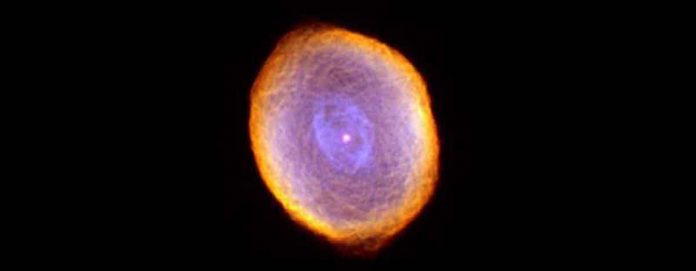The presence of the largest molecules known to exist in interstellar gas has been explained by astronomers at the University of Arizona.
The researchers simulated the environment of dying stars and observed the formation of buckyballs (carbon atoms linked by covalent bonds to three other carbon atoms) and carbon nanotubes (rolled up sheets of single-layer carbon atoms). Buckyballs and carbon nanotubes can form when silicon carbide dust, which is known to be near dying stars, releases carbon in response to intense heat, shockwaves, and high energy particles.
“We know from infrared observations that buckyballs populate the interstellar medium,” said lead researcher Jacob Bernal. “The big problem has been explaining how these massive, complex carbon molecules could possibly form in a hydrogen-rich environment like that found around a dying star.”
Buckyballs and nanotubes could be created by rearranging the structure of graphene (a sheet of single-layer carbon atoms). Using this as a foundation, the researchers heated silicon carbide samples to temperatures that resembled the aura of a dying star and observed the formation of nanotubes.
“We were astounded that we could build these extraordinary structures,” Bernal said. “Our nanotubes are very simple chemically, but they are extremely beautiful.”
Buckyballs are the largest molecules known to exist in interstellar space at the moment. Buckyballs with 60 to 70 carbon atoms are now known to be common.
“We know the raw material is there, and we know the conditions are very similar to what you’d find near the envelope of a dying star,” said study co-author Lucy Ziurys. “Shock waves pass through the envelope, and temperature and pressure conditions in space have been demonstrated. We also see buckyballs in planetary nebulae, which means we see both the beginning and end products of our experiments.”
The findings were reported in The Journal of Physical Chemistry A.

